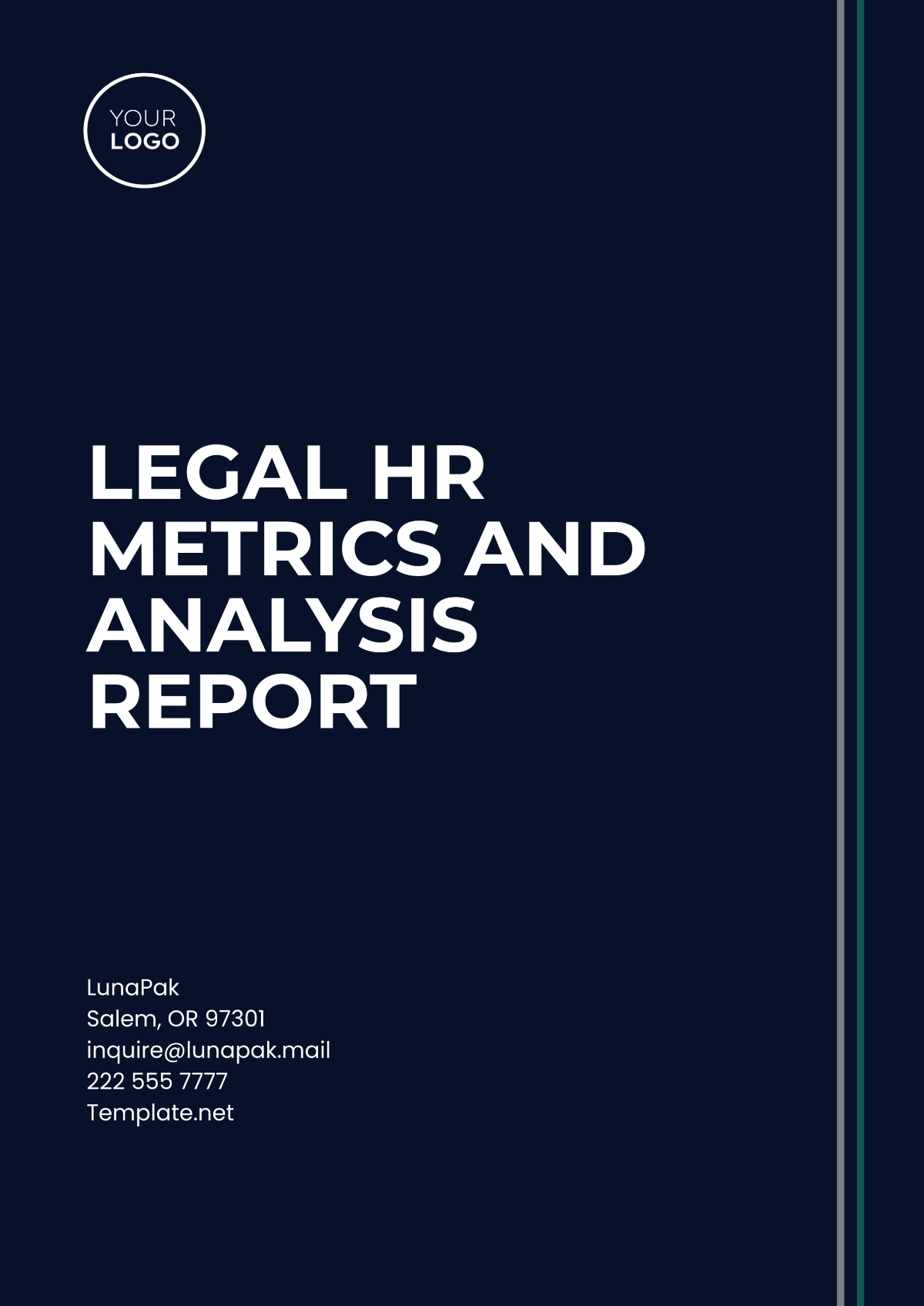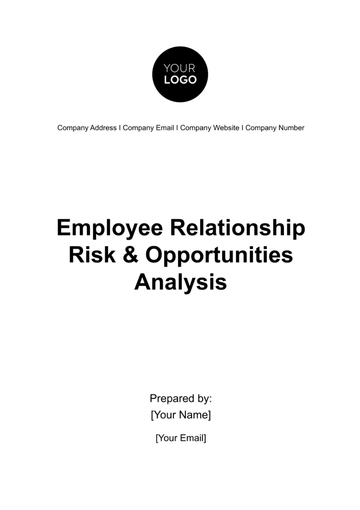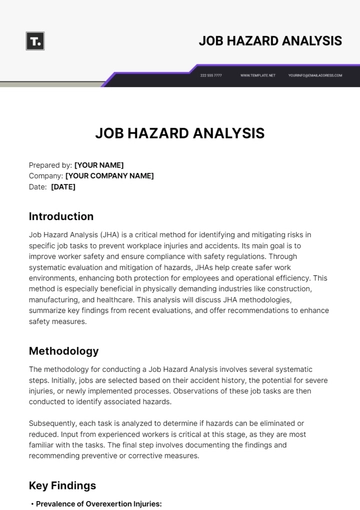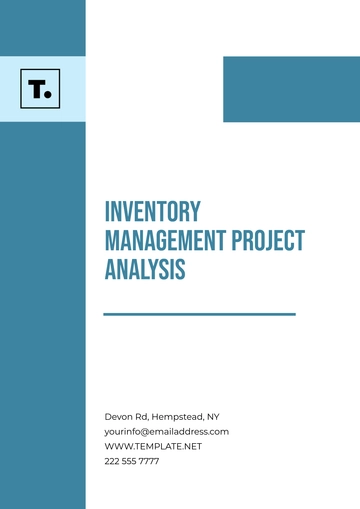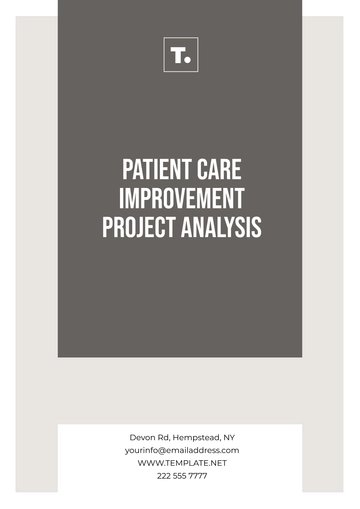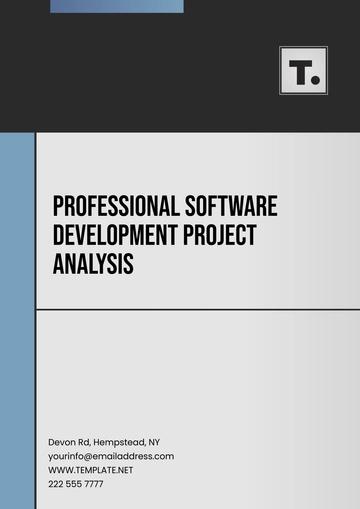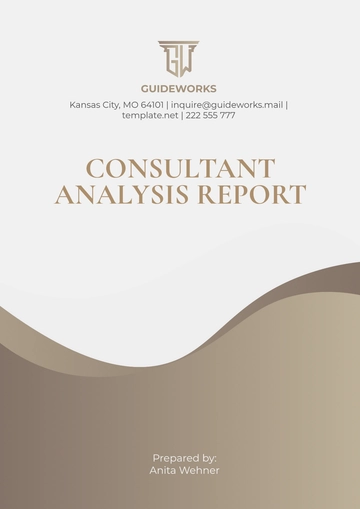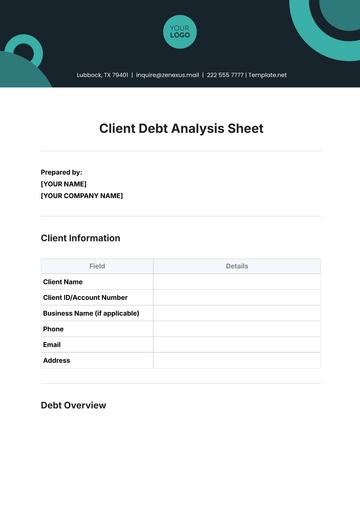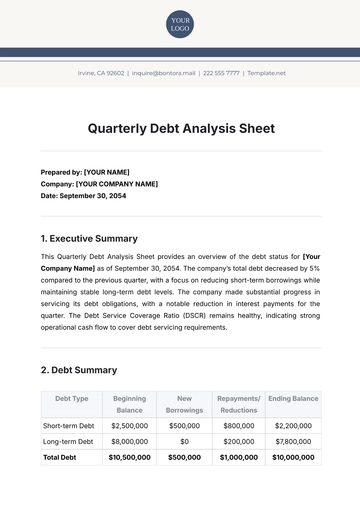Legal HR Metrics and Analysis Report
Prepared by: [Your Name]
Company: [Your Company Name]
Date: [Insert Date]
Introduction
This report aims to provide a comprehensive analysis of key legal HR metrics. It focuses on identifying, measuring, and analyzing indicators critical to legal compliance, organizational efficiency, and workforce management. As organizations face continuous legal challenges, understanding these metrics helps in mitigating risks and ensuring compliance with employment laws.
Key Legal HR Metrics
1. Diversity and Inclusion
Diversity and inclusion are pivotal for organizational growth and compliance with equal employment opportunity laws. Metrics in this area include:
These metrics help identify disparities and areas for improvement within the organization.
2. Employee Turnover
Monitoring employee turnover is crucial for understanding workforce stability and retention strategies. Key turnover metrics include:
Analyzing turnover metrics assists in identifying patterns or issues affecting employee retention.
3. Compliance Training
Ensuring that employees are adequately trained on compliance issues is essential. Key metrics include:
Training Completion Rates
Time Spent on Training
Assessment Scores Post-Training
Renewal and Recurrence of Training Programs
These metrics ensure that compliance training is effective and meets regulatory requirements.
Analysis of Compliance and Legal Risks
Workplace Discrimination Claims
Monitoring workplace discrimination claims is vital for minimizing legal risks and maintaining an inclusive work environment. Metrics include:
Analyzing these metrics helps in understanding the root causes of claims and in implementing preventative measures.
Workplace Safety Incidents
Ensuring workplace safety is mandated by law, and tracking incidents is part of legal compliance. Key metrics include:
Effective analysis of safety metrics ensures a safer work environment and compliance with occupational safety regulations.
Table of Key Metrics
Metric | Description | Importance |
|---|
Diversity Hiring Rates | Percentage of diverse candidates hired within a period | Ensures adherence to EEO guidelines |
Overall Turnover Rate | Percentage of employees leaving the organization | Indicates organizational stability |
Compliance Training Completion Rate | Percentage of employees completing required training | The key to regulatory compliance |
Workplace Discrimination Claims | Number of claims filed within a period | Reflects workplace equality |
Incident Frequency Rate | Number of safety incidents per employee | Essential for legal safety compliance |
Conclusion
The metrics discussed in this report are vital for ensuring legal compliance, promoting a positive working environment, and improving organizational efficiency. Regular analysis of these metrics facilitates informed decision-making and helps mitigate legal risks.
Organizations must consistently review and update their HR practices based on these metrics to align with evolving legal standards and organizational goals. A proactive approach to managing legal HR metrics not only safeguards the organization against potential liabilities but also enhances overall workforce management and organizational culture.
Report Templates @ Template.net
